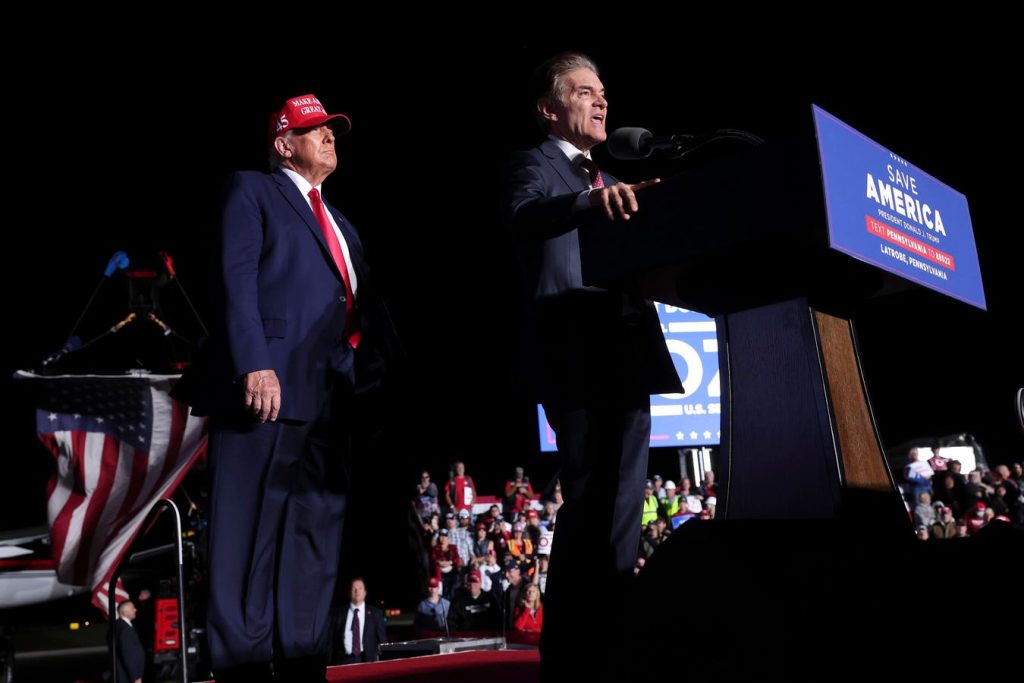The looming challenge of Medicare’s financial sustainability casts a long shadow over the incoming Trump administration. While campaign rhetoric promised “no cuts,” the reality of a program consuming $850 billion annually, representing one-sixth of federal spending, makes it a prime target for cost-cutting measures. However, navigating this treacherous terrain presents significant political perils. Both recipients and providers wield considerable influence, and any perceived threat to benefits or compensation could trigger a powerful backlash. This delicate balancing act is further complicated by the potential for increased spending if the administration pursues the favored strategy of expanding Medicare Advantage, a move that could exacerbate existing divisions within the administration and the Republican party.
The complexity of Medicare spending creates a tangled web of potential targets for reduction. Funds flow not only to beneficiaries but also to a vast network of providers, including doctors, hospitals, home healthcare agencies, skilled nursing facilities, and pharmaceutical companies, as well as private insurers operating Medicare Advantage plans. While acknowledging the existence of waste and inefficiency within the healthcare system, identifying and eliminating such excesses without impacting patient care will prove a formidable task. Trump’s advisors, including those leading the Department of Government Efficiency (DOGE), have signaled their intent to scrutinize Medicare spending, raising concerns among providers about potential payment cuts. This approach could face opposition even within the administration, particularly from Robert F. Kennedy Jr., the nominee to lead the Department of Health and Human Services, who may prioritize bolstering primary care and geriatric physician compensation to address shortages.
The spotlight increasingly focuses on Medicare Advantage (MA), a managed care option currently enrolling over half of all Medicare beneficiaries. Proponents tout its potential to integrate care and improve outcomes while controlling costs. However, evidence suggests that MA plans may actually be more expensive than traditional Medicare, with the Medicare Payment Advisory Commission estimating that they receive 122% of the per-beneficiary spending compared to traditional Medicare. Despite these cost concerns, influential Trump advisors advocate for expanding MA, potentially through automatic enrollment with an opt-out for traditional Medicare. This approach, coupled with deregulation of MA plans, could increase private insurer profits but raise overall federal spending, a paradox likely to generate considerable debate.
The push for MA expansion faces strong headwinds. Public sentiment has soured on managed care due to issues like pre-authorization requirements and limited provider networks. This discontent is palpable even within informal channels like social media, with some interpreting recent events as a potential warning sign for those advocating for increased reliance on private insurance within Medicare. Furthermore, incentivizing enrollment in MA plans likely necessitates increased federal spending, which clashes with the broader goal of fiscal restraint. The administration thus finds itself caught in a difficult dilemma: expanding MA could shift more beneficiaries to private insurance, a stated Republican objective, but it would also inflate the national debt.
The Trump administration’s approach to Medicare cost control appears to hinge on the expansion of Medicare Advantage plans, a strategy strongly supported by advisors like Russell Vought, the returning director of the Office of Management and Budget, and Mehmet Oz, the nominee to lead the Centers for Medicare and Medicaid Services (CMS). Vought previously championed significant cuts to provider payments, while Oz has consistently promoted MA plans, even suggesting a universal MA-style system funded by a new payroll tax. However, this reliance on MA presents a formidable budgetary challenge. Increased MA enrollment, particularly if incentivized by enhanced benefits or reduced cost-sharing, would likely escalate federal spending, potentially negating any savings achieved through provider payment cuts. This inherent tension underscores the difficult choices facing the administration as it attempts to reconcile fiscal conservatism with the political realities of Medicare reform.
The incoming administration inherits a complex and politically charged landscape surrounding Medicare. The program’s immense cost and its importance to a large and vocal segment of the population make it a prime target for reform, yet any changes will face intense scrutiny. The potential pursuit of spending cuts, combined with the likely expansion of Medicare Advantage, creates a precarious balancing act. While MA offers the allure of shifting more beneficiaries to private plans, it comes at the potential cost of increased federal spending and heightened public resistance to managed care. The ultimate success of the administration’s Medicare strategy will depend on its ability to navigate these conflicting pressures while addressing the fundamental challenge of long-term program sustainability.










